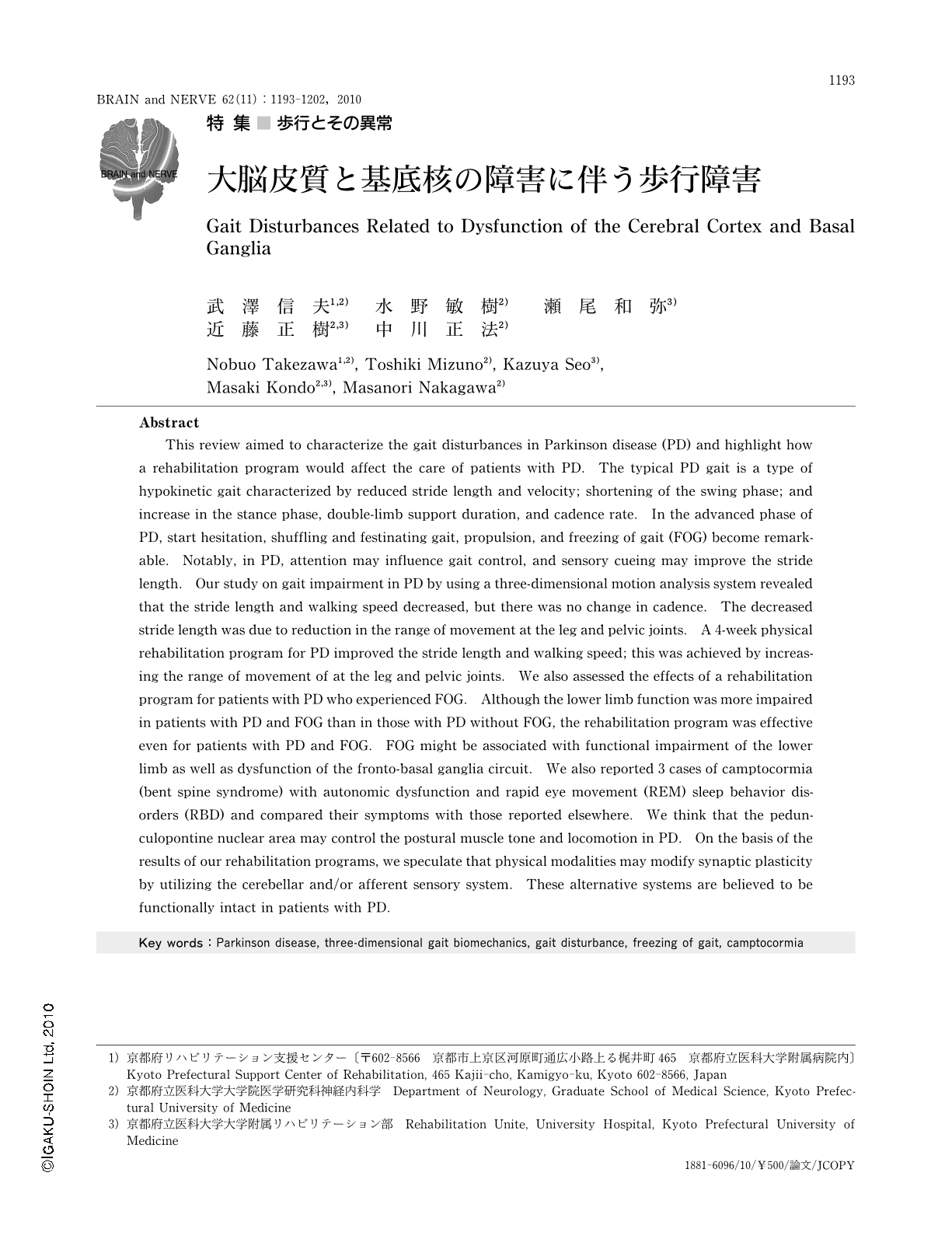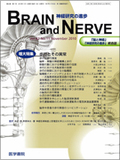Japanese
English
- 有料閲覧
- Abstract 文献概要
- 1ページ目 Look Inside
- 参考文献 Reference
はじめに
大脳皮質と大脳基底核(以下,基底核)の障害に伴う歩行障害の原因疾患として,特発性パーキンソン病(Parkinson disease:PD),大脳皮質基底核変性症(corticobasal degeneration:CBD),脳血管障害などがある。本稿では,その代表的な疾患であるPD の歩行障害の臨床的な特徴を踏まえ1),3次元動作解析やリハビリテーション(以下,リハ)介入への反応から,PD の歩行障害が大脳皮質-基底核系の問題だけでなく,全身的な身体運動機能の問題として捉えることが必要であることを述べたい。
Abstract
This review aimed to characterize the gait disturbances in Parkinson disease (PD) and highlight how a rehabilitation program would affect the care of patients with PD. The typical PD gait is a type of hypokinetic gait characterized by reduced stride length and velocity; shortening of the swing phase; and increase in the stance phase,double-limb support duration,and cadence rate. In the advanced phase of PD,start hesitation,shuffling and festinating gait,propulsion,and freezing of gait (FOG) become remarkable. Notably,in PD,attention may influence gait control,and sensory cueing may improve the stride length. Our study on gait impairment in PD by using a three-dimensional motion analysis system revealed that the stride length and walking speed decreased,but there was no change in cadence. The decreased stride length was due to reduction in the range of movement at the leg and pelvic joints. A 4-week physical rehabilitation program for PD improved the stride length and walking speed;this was achieved by increasing the range of movement of at the leg and pelvic joints. We also assessed the effects of a rehabilitation program for patients with PD who experienced FOG. Although the lower limb function was more impaired in patients with PD and FOG than in those with PD without FOG,the rehabilitation program was effective even for patients with PD and FOG. FOG might be associated with functional impairment of the lower limb as well as dysfunction of the fronto-basal ganglia circuit. We also reported 3 cases of camptocormia (bent spine syndrome) with autonomic dysfunction and rapid eye movement (REM) sleep behavior disorders (RBD) and compared their symptoms with those reported elsewhere. We think that the pedunculopontine nuclear area may control the postural muscle tone and locomotion in PD. On the basis of the results of our rehabilitation programs,we speculate that physical modalities may modify synaptic plasticity by utilizing the cerebellar and/or afferent sensory system. These alternative systems are believed to be functionally intact in patients with PD.

Copyright © 2010, Igaku-Shoin Ltd. All rights reserved.


